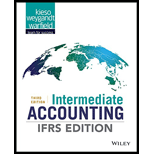
Carrying value: Carrying value is the amount that appears in
Earnings: Any monetary benefit that an organization gets in a specific period of time is called earnings.
GAAP: GAAP is “Generally Accepted Accounting Principles.” It is standard guidelines which are commonly used for financial reporting. These guidelines are maintained by the AICPA (American Institute of Certified Public Accountants).
Fair value: Fair value is a selling price which is agreed by the buyer and seller, and is also the estimate of the potential market price of good, service or asset.
Unrealized holding gains and losses: An unrealized gain is a profit recorded on paper results from the investment. It occurs when shares prices increase after investor purchases it, but an individual has to sell it, till the time it is not sold the amount of increase in share price is recorded as an unrealized gain.
An unrealized loss is a loss recorded on paper results from the investment. It occurs when shares prices decrease after investor purchases it, but an individual has to sell it, till the time it is not sold the amount of decrease in share price is recorded as an unrealized loss.
Other expenses and losses: Losses which are not related to primary business operations.Example, Foreign exchange losses.
Trading securities: Debt securities which are held with the intention to sell in the short term for profit are called trading securities.
Available-for-sale securities: A debt or equity securities which are purchased with the intention of selling it before its maturity, or selling prior to the longest time period in case if security is without its maturity are known as available-for-sale securities.
Held to maturity securities: Securities which are purchased and held till maturity with the intention to hold the investment existed at the time of purchase.
To determine the effect upon carrying value and earnings for each of the situations presented in the question document. Assume that these situations are unrelated.
Given information: All the information for W Co. is provided in the question document.
Trending nowThis is a popular solution!

Chapter 17 Solutions
Intermediate Accounting: IFRS Edition
- Please provide the solution to this financial accounting question using proper accounting principles.arrow_forwardWhat is depreciation, and why do companies apply it to fixed assets? Discuss at least two methods of calculating depreciation and how they affect a company’s financial reporting over time. Need answerarrow_forwardWhich account is not closed at the end of an accounting period? Consider typical accounts maintained in the general ledger. (A) Sales (B) Wages Expense (C) Capital (D) Rent Revenue HELParrow_forward
- What is the book value at the end of year 8?arrow_forwardCan you solve this general accounting problem with appropriate steps and explanations?arrow_forwardAurum Inc. prepared a fixed budget of 80,000 direct labor hours, with estimated overhead costs of $400,000 for variable overhead and $120,000 for fixed overhead. Aurum then prepared a flexible budget of 72,000 labor hours. How much are total overhead costs at this level of activity?arrow_forward

 AccountingAccountingISBN:9781337272094Author:WARREN, Carl S., Reeve, James M., Duchac, Jonathan E.Publisher:Cengage Learning,
AccountingAccountingISBN:9781337272094Author:WARREN, Carl S., Reeve, James M., Duchac, Jonathan E.Publisher:Cengage Learning, Accounting Information SystemsAccountingISBN:9781337619202Author:Hall, James A.Publisher:Cengage Learning,
Accounting Information SystemsAccountingISBN:9781337619202Author:Hall, James A.Publisher:Cengage Learning, Horngren's Cost Accounting: A Managerial Emphasis...AccountingISBN:9780134475585Author:Srikant M. Datar, Madhav V. RajanPublisher:PEARSON
Horngren's Cost Accounting: A Managerial Emphasis...AccountingISBN:9780134475585Author:Srikant M. Datar, Madhav V. RajanPublisher:PEARSON Intermediate AccountingAccountingISBN:9781259722660Author:J. David Spiceland, Mark W. Nelson, Wayne M ThomasPublisher:McGraw-Hill Education
Intermediate AccountingAccountingISBN:9781259722660Author:J. David Spiceland, Mark W. Nelson, Wayne M ThomasPublisher:McGraw-Hill Education Financial and Managerial AccountingAccountingISBN:9781259726705Author:John J Wild, Ken W. Shaw, Barbara Chiappetta Fundamental Accounting PrinciplesPublisher:McGraw-Hill Education
Financial and Managerial AccountingAccountingISBN:9781259726705Author:John J Wild, Ken W. Shaw, Barbara Chiappetta Fundamental Accounting PrinciplesPublisher:McGraw-Hill Education





